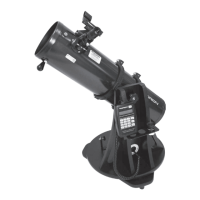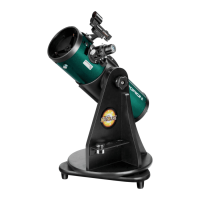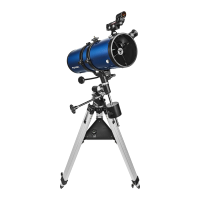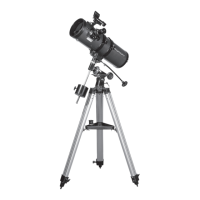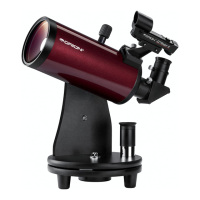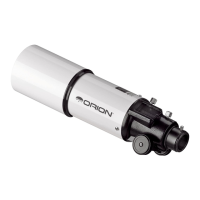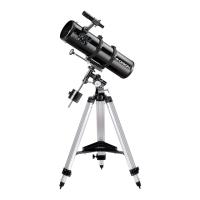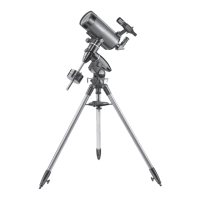5
Focusing the Telescope
With the 17mm Kellner eyepiece (1) inserted into the focuser
(4) and secured with the thumbscrews, aim the optical tube
(3) so the front (open) end is pointing in the general direction
of an object at least 1/4-mile away. With your fingers, slowly
rotate one of the focus wheels (15) until the object comes
into sharp focus. Go a little bit beyond sharp focus until the
image starts to blur again, then reverse the rotation of the
knob, just to make sure you’ve hit the exact focus point.
Operating the EZ Finder II reflex finder
The EZ Finder II reflex finder (2) (Figure 6) works by pro-
jecting a tiny red dot onto a lens mounted in the front of the
unit. When you look through the EZ Finder II, the red dot will
appear to float in space. The red dot is produced by a light-
emitting diode (LED), not a laser beam, near the rear of the
sight. A replaceable 3-volt lithium battery provides the power
for the diode.
Do You Wear Eyeglasses?
If you wear eyeglasses, you may be able to keep them on
while you observe. In order to do this, your eyepiece must
have enough “eye relief” to allow you to see the entire field
of view with glasses on. You can try looking through the
eyepiece first with your glasses on and then with them
off, to see if the glasses restrict the view to only a portion
of the full field. If the glasses do restrict the field of view,
you may be able to observe with your glasses off by just
refocusing the telescope to your unaided vision.
If your eyes are astigmatic, images will probably appear
best with glasses on. This is because a telescope’s focuser
can accommodate for nearsightedness or farsightedness,
but not astigmatism. If you have to wear your glasses
while observing and can-
not see the entire field of
view, you may want to
purchase additional
eyepieces that have
longer eye relief.
Short
eye relief
restricts
the field
of view for
eyeglass
wearers.
Long eye
relief allows
full field
of view to
be seen with
or without
eyeglasses.
Figure 4. The StarBlast has two axes of motion: altitude (up/down)
and azimuth (left/right).
Altitude
Azimuth
Figure 5. Try grasping the telescope as shown for easiest pointing.
One hand moves the telescope from the front of the tube while the other
hand remains on the handle to keep the telescope steady.
Figure 6. The EZ Finder II reflex sight.
Power Knob
Azimuth
adjustment
Knob
Battery
casing
Mounting bracket
Altitude
adjustment
Knob

